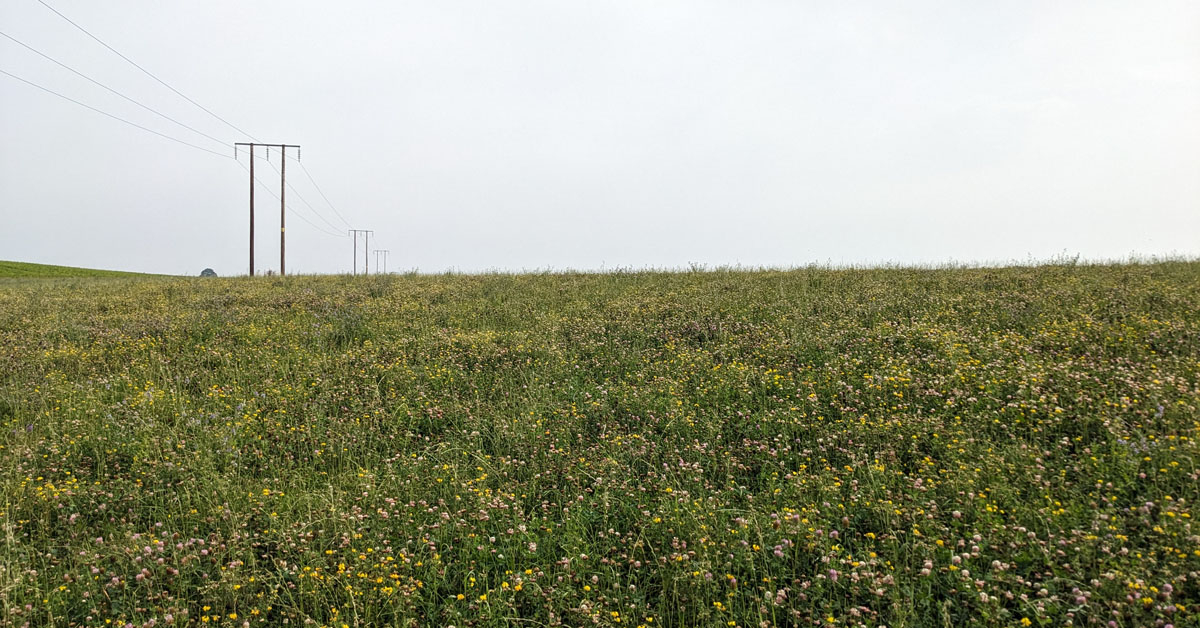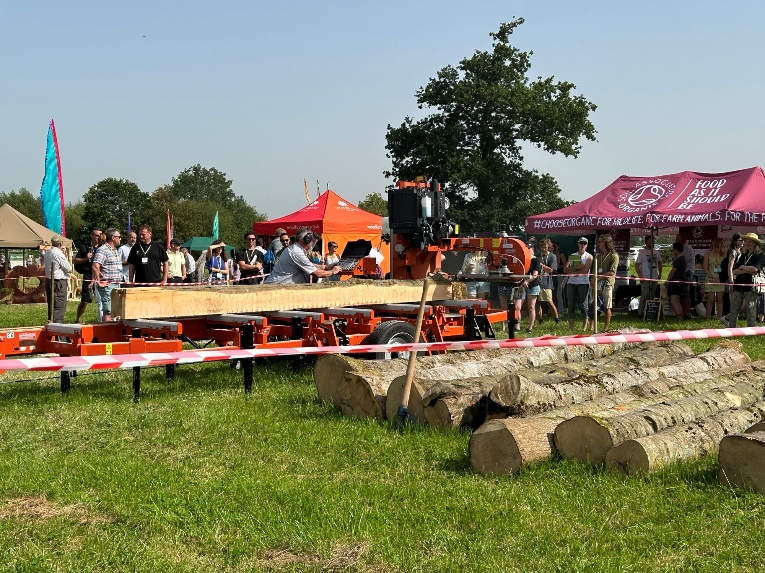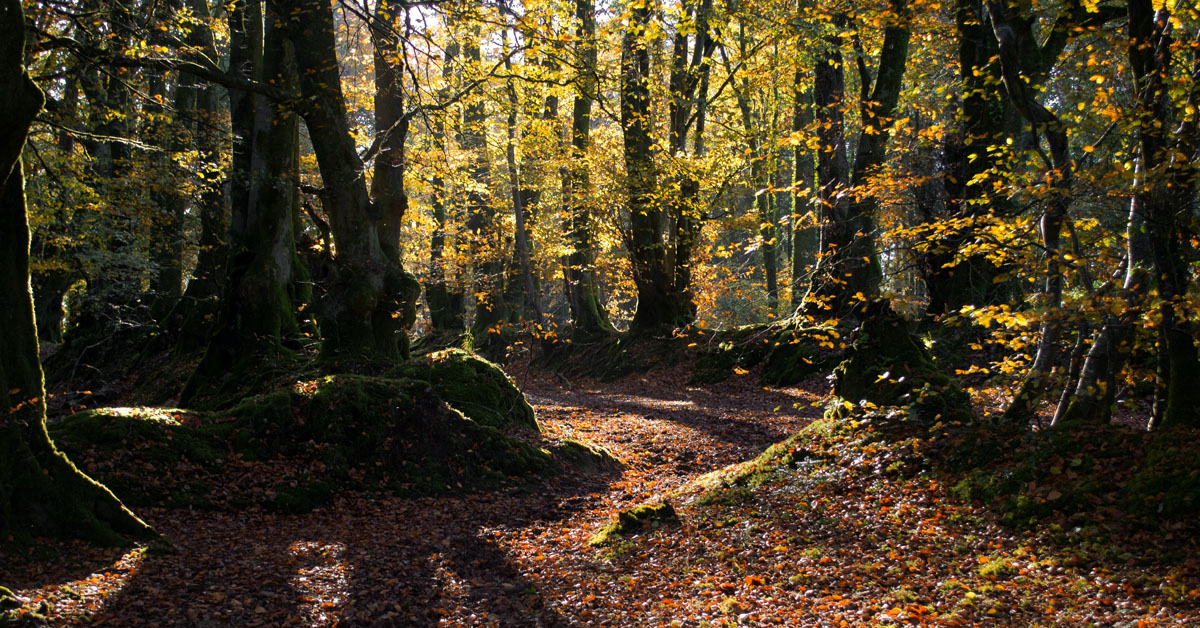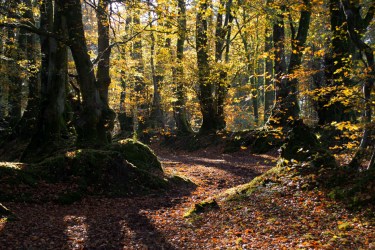It’s fair to say that in the first 40 years after the Second World War, the importance of forestry to farm economics was given little thought. However, since the 1980s, its place in livestock and arable production systems has become clear. Now, as weather patterns become more extreme and climate mitigation strategies become vital, agroforestry is set to become central to farming practice.
Agroforestry – a primer
Agroforestry is tree planting that is deliberately combined with agriculture on the same piece of land. It’s an essential connection between agriculture and forestry that could provide you with two sources of income from:
- agricultural products (livestock or crops)
- any forestry-generated products, (sawlogs, fuelwood, fruit, and nuts)
It can also include the implementation of hedgerows, shelterbelts, and buffer strips.
It aims to incorporate all the benefits that trees provide. These include biodiversity, shelter, shade, and improved soil health, with the production of food.
There are two main strands of agroforestry practice:
- Silvopasture
This is where trees and pasture are integrated into a single system to raise livestock. This system allows livestock to graze freely under the tree canopy, which provides the animals with protection, shade and shelter. - Silvoarable
This is where crops are grown beneath trees in rows that are large enough to allow tractors to pass through. This system encourages improved soil quality, as varying root lengths of different plants creates better soil structures. This enhances the crops’ productivity.
Some UK farmers are already incorporating trees into silvoarable business systems.
Economic benefits of agroforestry
- Increased productivity
Agroforestry systems can produce more food and fibre per unit of land than conventional farming methods. This is because trees can provide shade and shelter for crops, which helps to reduce water loss and improve yields. Trees can also fix nitrogen from the air, which can provide nutrients for crops.
Additionally, tree roots reach further down than those of cereals or vegetables. This promotes soil health, leading to stronger crop growth than in monocultural production. In turn, you get more crops from the same acre.
For livestock, the shade, shelter and browse opportunities improves their quality of life and well-being, which encourages their productivity. - Diversified income streams
Agroforestry helps farmers optimize their income via product diversification, such as selling fruit from their trees. This can also open up access wider market opportunities and networks. This diversification helps to reduce exposure to risks and, making farming more sustainable.
Environmental benefits of agroforestry
- Improved soil quality, reduced soil erosion
Trees can help improve soil quality by providing shade and windbreaks, which helps to reduce erosion and improve water infiltration. Trees can also add organic matter to the soil, which can help to improve fertility and drainage. Trees integrated into arable settings have been proven to reduce soil erosion by up to 65%.
- Water filtration and holding capacity
Agroforestry can be a cost-effective flood mitigation method, by improving soil infiltration and water retention. This reduces the impact of flooding by increasing the capacity of the land to retain water. For more information see the Soil Association’s publication Agroforestry in England, published in 2018. - Reduced environmental impact
Trees sequester carbon, which can help to mitigate climate change. Agroforestry systems can reduce the need for pesticides as they provide shelter to natural enemies. In turn, this can help to improve water quality and reduce pollution. - Increased biodiversity
Agroforestry landscapes provide homes for a variety of wildlife species. They also supply corridors for wildlife to move between habitats, which are crucial for their foraging and breeding.
Social benefits of agroforestry
- A more green and pleasant land
Besides building in production-system resilience and income-stream diversity, agroforestry makes the landscape look better too. This can provide an extra win, particularly if you are diversifying your income stream to include an element of tourism. Let’s face it, visitors prefer to gaze upon vistas containing hedges and trees. They fit popular perceptions of countryside, nature, and high-quality land management.
More and more, people are demanding a connection with nature, as a break from their increasing siloed, mediated, screen-dominated lives. If you wish to provide a restorative countryside experience for visitors, why not make it as pleasant as possible?

Agroforestry – coming of age in the UK
Agroforestry is now gaining traction in agricultural practice all over the country. It is part of UK government policy as an element of BPS and (from 2024) SFI.
Innovators have been on-board for over 10 years. For example, the UK’s largest agroforestry system is in Cambridgeshire. It was planted in 2009-10, at Whitehall Farm.
Knowledge of agroforestry’s practice and benefits are being promoted by, amongst others, the Soil Association. Public events are now emerging too, with live schemes being demonstrated and discussed.
The Agroforestry Show, 2023 – the UK’s first show for farmers, foresters and arborists

6th–7th September 2023 marked the first ever Agroforestry Show. It was held at Eastbrook Farm, Wiltshire, and run by the Soil Association and the Woodland Trust. This festival-style event drew together farmers, advisors, funders, and processors, creating a diverse and stimulating focus for progressive, profitable farming.
Over 100 speakers gave talks, as part of 35 presentation sessions, and there were farm walks and practical demonstrations too. Participants included representatives from the UK Government and the devolved administrations, outlining their current support for agroforestry. (You can find a handy guide to agroforestry funding below.)
One session involved innovative farmers discussing their involvement in a trial as part of the Devon silvopasture network. The speakers introduced their farms’ contrasting soil types, which varied from clay soils to sandy silts. Then they shared their different experiences, and planting designs.
The trial is in its early stages and trees are still becoming established. Consequently, the opportunity to assess livestock grazing is yet to come. However, all farmers in the network share one trait: an open-minded attitude to seeking innovative best practices. They all aim to improve their farms’ soils in ways that create virtuous circles, rather than diminishing returns.
Not all the projects are simply about introducing trees. For example, the use of cover crops in hopyards started with a member of this network. This practice is now being used across half of the UK’s hops industry.
What agroforestry options are available to you?
If you’d like to practice agroforestry, there are grant option available, from the UK government and the devolved administrations. Here’s a quick guide.
England
Tree planting and woodland creation
Landowners, land managers and public bodies can receive over £10,000 per hectare to create new woodland on areas as small as one hectare.
Tree planting and woodland creation: overview
ELMs
The Sustainable Farming Incentive allows farmers to get paid to take actions that support food production/improve farm productivity and protected and improve the environment. At the time of writing, new options are expected to be announced in autumn 2023 and will include agroforestry standards.
Environmental land management schemes: overview
Wales
Introduction of Sustainable Land Management
The aim is to introduce land management practices that will produce food and goods in a sustainable manner, mitigate and adapt to climate change, maintain resilience of ecosystems and conserve the countryside and cultural resources.
Sustainable Farming Scheme
Universal Farmers will be required to have at least 10% tree cover on their farm, managed in line with the UK Forestry Standard (This includes existing tree cover).
Sustainable Farming Scheme – Outline Proposals for 2025
Woodland Creation Planning Scheme: Provides financial support to use a registered woodland planner to develop a woodland creation plan for an area of at least 0.25 hectares. If less than 2 hectares in size, it may be possible to apply to the Small Grant – Woodland Creation scheme instead. The plan is verified by Natural Resources Wales to make sure it meets the UK Forestry Standard. You can use the plan to apply to the Woodland Creation Grant for funding to plant the trees.
Woodland Creation Planning Scheme
Scotland
Integrating Tree Network
A farmer and crofter-led initiative supported by Scottish Forestry and the Scottish Government, which aim is to build up a strong network of farm woodland demonstration sites across Scotland, with 10 host farms which showcase the benefits growing trees have had on their business.
Integrating Trees Network – Farming For a Better Climate
Forestry Grant Scheme
This scheme offers financial support to help land managers create new woodland and supports woodland improvement and sustainable management of existing woodlands.
Scottish Forestry has introduced new measures to the Forestry Grant Scheme to boost agroforestry planting in Scotland. This includes a 50% increase in the grant rate, from £3,600 per hectare to £5,400 per hectare.
Other measures to increase agroforestry include: making agroforestry funding available for planting fruit and nut and native trees, allowing additional protection measures for trees, to allow cattle to graze within agroforestry projects and giving farmers more opportunity to participate in agroforestry by adapting the planting thresholds.
Scottish Forestry – Forestry Grant Scheme
Northern Ireland
Environmental Farming Scheme
This scheme encourages agroforestry contributing both to Northern Ireland’s woodland creation target, and increasing the sustainability, socio-economic and environmental resilience of its livestock farms.
Since 2017, agroforestry has been an option under the Environmental Farming Scheme, and provides an opportunity to introduce agroforestry systems on-farm, whilst continuing to use the land for agricultural purposes
Higher – aims to deliver site-specific management of environmentally designated sites and other priority habitats
Wider – applies to land outside areas of environmental designation and as such will be available to most farmers in Northern Ireland. Applicants simply choose which options they feel best suit the needs of their farm business and then submit an application for the land they will have control of for the five year duration of the scheme
Environmental Farming Scheme
Want to get into agroforestry?
If you would like to discuss the opportunities, challenges and benefits of agroforestry then why not give me a call? I can help to signpost you towards funding streams and help you to devise strategies, based on your whole-farm ambitions. This will help you to create a sustainable, diverse and profitable farm.
You can even wrap this into DEFRA-funded consultancy via Future Farming Resilience Fund, so it won’t cost you anything extra.
To get things started, contact me via email navjot.gill@genusplc.com or call 07813 636888.
Alternatively, fill out the form on our Contact Us page, and I’ll be in touch with you soon.






